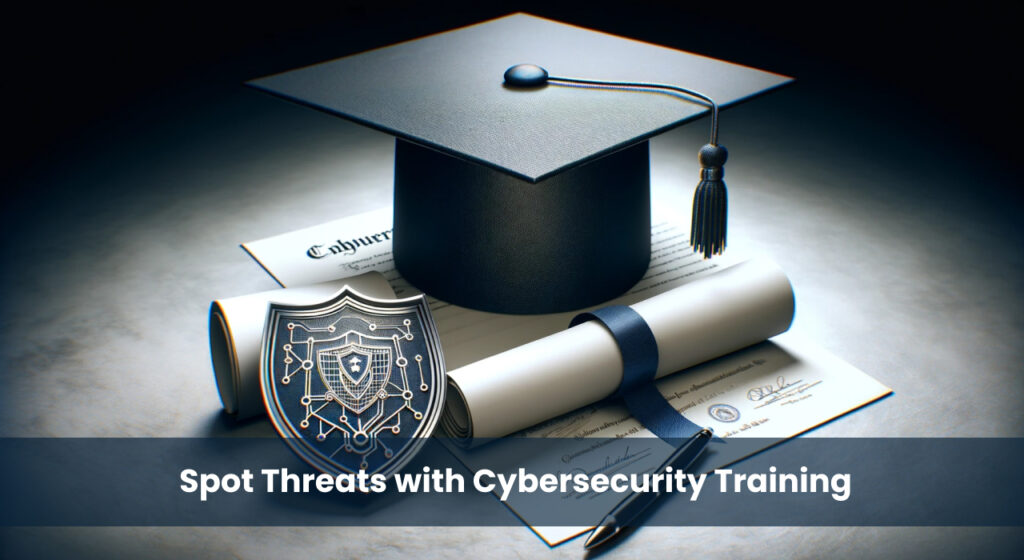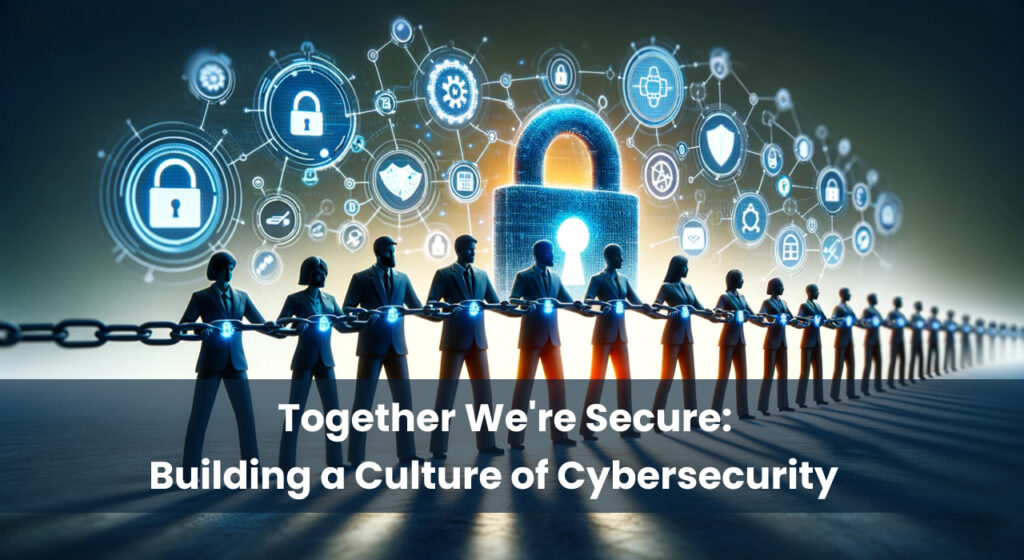
The digital landscape poses an increasingly complex threat to businesses of all sizes, and small businesses are particularly susceptible. According to a 2023 Verizon Business Report, 43% of cyberattacks targeted small and medium-sized businesses, resulting in an average cost of $2.9 million per incident. This financial burden can be devastating for smaller organizations, potentially forcing them to close their doors or suffer significant financial hardship.
Beyond the immediate financial losses, a successful cyberattack can inflict irreparable damage to a small business’s reputation. Stolen customer data, compromised financial information, or disrupted operations can erode trust and lead to long-term consequences. For example, in 2021, a data breach at a small healthcare provider exposed the personal information of over 50,000 patients, resulting in a significant decline in patient trust and a hefty settlement fee.
Building a culture of cybersecurity goes beyond implementing technical safeguards. It fosters employee awareness, engagement, and proactive behavior as the first line of defense. This culture emphasizes shared responsibility, recognizing that every employee plays a crucial role in protecting sensitive information and maintaining a secure digital environment.
This article provides actionable insights and best practices to help you promote employee involvement in building a strong cybersecurity culture within your small business. By empowering your employees to recognize and mitigate cyber threats, you can significantly enhance your organization’s overall cybersecurity posture.
Why Building a Culture of Cybersecurity Matters

Small businesses, despite their size, are prime targets for cybercriminals due to several factors. They often have limited cybersecurity resources compared to larger corporations, making them more vulnerable to phishing attacks, where attackers attempt to steal sensitive information by impersonating legitimate sources. According to the 2023 IBM X-Force Threat Intelligence Index, phishing remains the most common attack vector, accounting for 25% of all breaches.
Furthermore, small businesses are susceptible to malware infections, which can disrupt operations, steal data, and cause significant financial damage. Ransomware attacks are also a growing threat, where attackers encrypt crucial data and demand a ransom for its return. A 2022 report by the Cybersecurity & Infrastructure Security Agency (CISA) revealed that ransomware attacks cost small businesses an average of $113,000, highlighting the crippling financial impact of such threats.
Cybersecurity & Infrastructure Security Agency (CISA): https://www.cisa.gov/
Building a culture of cybersecurity empowers employees to identify and mitigate these risks. By fostering awareness of common cyber threats, such as phishing emails and suspicious attachments, employees can become the first line of defense against malicious attempts. Training employees to recognize red flags and report suspicious activity can significantly improve an organization’s overall security posture.
The benefits of a strong cybersecurity culture extend beyond risk mitigation. When employees feel empowered and equipped to contribute to cybersecurity efforts, their morale and sense of responsibility often increase. Additionally, a focus on cybersecurity demonstrates to customers your commitment to safeguarding their data, fostering trust and potentially leading to a competitive advantage in an increasingly security-conscious marketplace.
For instance, a recent SBA case study highlighted how a small bakery implemented a comprehensive cybersecurity program, including employee training and awareness initiatives. This resulted in a significant decrease in phishing attempts and a strengthened overall security posture, allowing the bakery to focus on its core business rather than worrying about cyber threats.
Establishing the Foundation: Policies and Procedures

Clear and concise cybersecurity policies and procedures act as the cornerstone of a robust security culture. They provide employees with a comprehensive understanding of their individual responsibilities and outline the organization’s expectations regarding technology use, data security, and incident response. These policies should address key areas including:
- Acceptable Use of Company Technology: This defines authorized and prohibited activities on company devices and networks, such as personal email use or accessing unauthorized websites.
- Password Management: This establishes strong password complexity requirements, including minimum length, character types, and regular rotation protocols.
- Data Security Practices: This outlines standards for data classification, encryption, and handling, ensuring the confidentiality and integrity of sensitive information.
- Incident Reporting Protocols: This guides employees on identifying and reporting suspicious activity, security breaches, or data loss, ensuring timely response and mitigation actions.
Beyond these core components, additional elements can further strengthen your policies. These might include:
- Acceptable browsing practices: to deter visits to malicious websites or downloading unauthorized software.
- Mobile device security guidelines: to address growing reliance on personal devices for work tasks.
- Social media usage recommendations: to promote responsible online behavior and mitigate risks associated with personal accounts.
Making these policies readily accessible to all employees is crucial. This ensures everyone understands their role in maintaining a secure environment. Consider utilizing a centralized online portal, incorporating them into employee handbooks, or including them as part of regular training materials.
By establishing and maintaining clear cybersecurity policies and procedures, you provide a solid foundation for building a culture of shared responsibility and proactive security awareness within your organization.
Building Awareness Through Training and Education

Regular cybersecurity awareness training is fundamental in fostering a culture of security within your small business. This training equips employees with the knowledge and skills necessary to identify and mitigate cyber threats, ultimately protecting your organization’s valuable assets and information.
Tailoring training programs to specific roles and responsibilities is crucial for maximizing their effectiveness. For instance, training for finance personnel might focus on recognizing financial phishing scams, while marketing teams might benefit from learning how to identify and avoid social engineering attacks.
Moving beyond traditional lectures, consider utilizing diverse training formats:
- Interactive online modules: These offer a flexible and cost-effective way to deliver essential knowledge, allowing employees to learn at their own pace.
- In-person workshops: These provide opportunities for interactive learning, group discussions, and real-time Q&A sessions.
- Simulated phishing exercises: These test employees’ ability to identify and respond to phishing attempts, providing valuable hands-on experience.
- Engaging presentations: Utilize visuals, storytelling, and relevant case studies to keep employees engaged and retain key information.
Ongoing education is critical as the cyber threat landscape constantly evolves. Regularly update training materials to reflect the latest threats and incorporate best practices. Resources like the National Institute of Standards and Technology (NIST) Cybersecurity Framework [https://www.nist.gov/cyberframework] offer valuable guidance and tools for developing and continually improving your training content.
By implementing a comprehensive and engaging training program, you empower your employees to become active participants in your organization’s cybersecurity efforts. This fosters a collaborative environment where everyone plays a vital role in protecting your valuable data and maintaining a secure digital ecosystem.
Encouraging Employee Engagement and Participation

Building a culture of cybersecurity goes beyond awareness; it necessitates active employee engagement and participation. Here are key strategies to foster this:
- Foster a Culture of Open Communication: Encourage employees to feel comfortable reporting suspicious activity or potential security breaches without fear of blame or reprimand. Create designated channels for anonymous reporting, and ensure prompt investigation and appropriate response to reported issues.
- Encourage Active Participation and Feedback: Create opportunities for employees to voice their concerns and suggestions regarding cybersecurity policies and procedures. Conduct regular surveys or open forums to gather valuable feedback and encourage continuous improvement of your security framework.
- Recognize and Reward Good Cybersecurity Practices: Acknowledge and appreciate employees who demonstrate strong cybersecurity awareness and responsible behaviors. This could involve public recognition, informal expressions of gratitude, or even small incentives. By highlighting positive examples, you motivate others to embrace good practices and reinforce the importance of cybersecurity within your organization.
- Promote Collaboration: Encourage open dialogue and collaboration between employees and management on cybersecurity matters. This fosters a sense of shared responsibility and empowers employees to feel invested in the success of your company’s cybersecurity efforts. Consider forming a cybersecurity awareness committee with representatives from different departments, fostering a collaborative approach to protecting your organization as a whole.
By promoting these strategies, you create an environment where employees feel empowered to contribute actively to a strong cybersecurity culture. This collective effort ultimately strengthens your organization’s overall security posture and minimizes the risk of cyberattacks.
Empowering your employees goes beyond just training. Consider partnering with a reputable cybersecurity provider to gain access to specialized expertise and advanced solutions that can further strengthen your defenses. These providers can offer additional resources and ongoing support to keep your employees informed and engaged. To learn more about selecting the right partner for your small business, read our comprehensive guide: Choosing the Best Cybersecurity Partner For Your Small Business.
Building a robust culture of cybersecurity within your small business is not a one-time endeavor; it requires continuous effort, commitment, and collaboration. This article has outlined essential steps you can take to achieve this, including establishing clear policies and procedures, providing regular training and awareness programs, and actively engaging your employees.
Remember, your employees are the first line of defense against cyber threats. By fostering a culture of open communication, shared responsibility, and proactive engagement, you empower them to recognize and mitigate these risks, ultimately safeguarding your valuable data and ensuring the long-term success of your organization.
A strong cybersecurity culture goes beyond technical measures; it fosters trust, collaboration, and a shared sense of responsibility. This translates to enhanced security, improved employee morale, increased customer trust, and ultimately, a competitive edge in today’s increasingly digital landscape. By investing in building a strong cybersecurity culture, you are investing in the future of your small business and its continued success.
Categorized in:
Comments